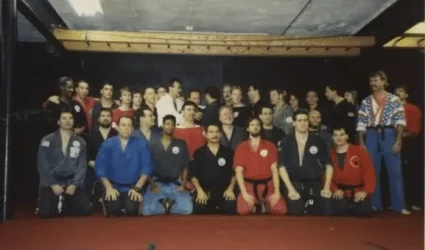Steve
Mostly Harmless
i think that’s generally what one can expect, but hopefully within reason. What I mean is, lack of political savvy and an inability to read a room will surely put a bit of a marker on a guy. If you are drawing attention to yourself, you can’t be surprised at the attention. But i would hope the goal isn’t to make him feel so unwelcome that he quits after a failed test.Wouldn’t being flamboyant get you in ‘trouble‘ on the mat?
When I practised Kendo, if somebody turned up with a gold-flecked lacquered chest protector (‘Do’) or something flashier than the usual black, everyone made it their number one objective to strike ’Do’ to scratch it up a bit or hit the wearer slightly above it’s upper rim, and under your armpit…that is painful!
When someone turned up with a white sword sheath (‘saya’) at an Iaido seminar, he was approached by a senior grade with the comment, “You’re brave, aren’t you?” The student’s inability to read people and situations meant he retorted with, “I’ve ordered a pink one, too.” We never saw him after that seminar as he failed his shodan grading.
All I’m saying is that it’s healthy to keep things in perspective. This is supposed to be fun. It’s okay to take the activity seriously, but (IMO) healthy not to take ourselves too seriously. Particularly in a traditional art where there is a fairly thin line between martial arts and historical reenactment.

